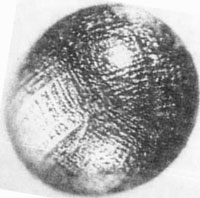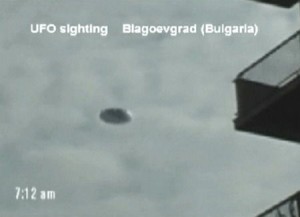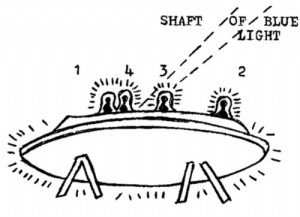Warning: strlen() expects parameter 1 to be string, array given in /home2/orbman69/public_html/wp-includes/functions.php on line 262
(Last Updated On: )
THINK ABOUTIT CRASH REPORT
Date: January 29, 1986
Sighting Time: 7:55 p.m.
Day/Night: Night
Location: Dalnegorsk
Urban or Rural: Rural
Hynek Classification: CE-III (Close Encounter III) Close observation with animate beings associated with the object.
Duration:
No. of Object(s): 1
Size of Object(s): three meters in diameter
Distance to Object(s):
Shape of Object(s): near-perfect round shape, with no projections or cavities
Color of Object(s): similar to that of burning stainless steel.
Number of Witnesses: Multiple
Full Report
This internationally famous UFO incident took place in 1986, on January 29, at 7:55 p.m. Some have called it the Roswell Incident of the Soviet Union. The information concerning this incident was sent to us by a number of Russian ufologists.
Dalnegorsk is a small mining town in the Far East of Russia. That cold January day a reddish sphere flew into this town from the southeastern direction, crossed part of Dalnegorsk, and crashed at the Izvestkovaya Mountain (also known as Height or Hill 611, because of its size). The object flew noiselessly, and parallel to the ground; it was approximately three meters in diameter, of a near-perfect round shape, with no projections or cavities, its colour similar to that of burning stainless steel. One eyewitness, V. Kandakov, said that the speed of the UFO was close to 15 meters per hour. The object slowly ascended and descended, and its glow would heat up every time it rose up. On its approach to Hill 611 the object “jerked”, and fell down like a rock.
All witnesses reported that the object “jerked” or “jumped”. Most of them recall two “jumps”. Two girls remember that the object actually “jumped” four times. The witnesses heard a weak, muted thump. It burned intensively at the cliff’s edge for an hour. A geological expedition to the site, led by V. Skavinsky of the Institute of Geology and Geophysics of the Siberian Branch of the Soviet Academy of Sciences (1988), had confirmed the object’s movements through a series of chemical and physical tests of the rocks collected from the site. Valeri Dvuzhilni, head of the Far Eastern Committee for Anomalous Phenomena, was the first to investigate the crash. With the help of our colleagues in Russia this is the most accurate account of the incident to date.
Dr. Dvuzhilni arrived at the site two days after the crash. Deep snow was covered the area at the time. The site of the crash, located on a rocky ledge, was devoid of snow. All around the site remnants of silica splintered rocks were found: (due to exposure to high temperatures), and “smoky” looking. Many pieces, and a nearby rock, contained particles of silvery metal, some “sprayed”-like, some in the form of solidified balls. At the edge of the site a tree-stump was found. It was burnt and emitted a chemical smell. The objects collected at the site were later dubbed as “tiny nets”, “little balls”, “lead balls”, “and glass pieces” (that is what each resembled).
Closer examination revealed very unusual properties. One of the “tiny nets” contained torn and very thin (17 micrometers) threads. Each of the threads consisted of even thinner fibers, tied up in plaits. Intertwined with the fibers were very thin gold wires. Soviet scientists, at such facilities as the Omsk branch of the Academy of Sciences, analyzed all collected pieces. Without going into specific details suffice it to say that the technology to produce such materials was not yet available on Earth…except for one disturbing account.
To give an idea of the complexity of the composition of the pieces, let us look at the “iron balls”. Each of them had its own chemical composition: iron, and a large mixture of aluminum, manganese, nickel, chromium, tungsten, and cobalt.
silver ball like object from crash site
Such differences indicate that the object was not just a piece of lead and iron, but some heterogeneous construction made from heterogeneous alloys with definite significance. When melted in a vacuum, some pieces would spread over a base, while at another base they would form into balls. Half of the balls were covered with convex glass-like structures. Neither the physicists nor physical metallurgists can say what these structures are, what their composition is. The “tiny nets” (or “mesh”) have confused many researchers. It is impossible to understand their structure and nature of the formation.
Mesh like object found
A. Kulikov, an expert on carbon at the Chemistry Institute of the Far Eastern Department of the Academy of Sciences, USSR, wrote that it was not possible to get an idea what the “mesh” is. It resembles glass carbon, but conditions leading to such formation are unknown. Definitely a common fire could not produce such glass carbon. The most mysterious aspect of the collected items was the disappearance, after vacuum melting, of gold, silver, and nickel, and the appearance-from nowhere-of molybdenum, that was not in the chamber to begin with.
The only thing that could be more or less easily explained was the ash found on site. Something biological was burned during the crash. A flock of birds, perhaps, or a stray dog; or someone who was inside the crashed object?
Dr. Dvuzhilni’s article was published in a Soviet (Uzbekistan) Magazine NLO: Chto, Gde, Kogda? (Issue 1, 1990, reprint of an article in FENOMEN Magazine, March 23, 1990). In his article Dalnegorski Phenomen V. Dvuzhilni provides details unavailable elsewhere.
The southwesterly trajectory of the object just about coincides with the Xichang Cosmodrome of People’s Republic of China, where satellites are launched into geosynchronous orbit with the help of the Great March-2 carrier rockets. There is no data of any rocket launches in the PRC at the end of January. At the same time, Sinxua Agency reported on January 25, 1988, that there was a sighting of a glowing red sphere not far from the Cosmodrome, where it hovered for 30 minutes. Possibly, UFOs had shown interest toward the Chinese Cosmodrome in the years 1989 and 1988.
There is another curious detail: at the site of the Height 611 small pieces of light gray color were discovered, but only in the area of the contact. These specimens did not match any of the local varieties of soil. What is amazing, the spectroscopic analysis of the specimens matched them to the Yaroslavl tuffs of the polymetallic deposits (i.e. the specimens possessed some characteristic elements of the Yaroslavl, but not the Dalnegorsk, tuffs). There is a possibility that the object obtain pieces of tuff in the Yaroslavl area. Tuffs experience metamorphosis under the effect of high temperatures .
The site of the crash itself was something like an anomalous zone. It was “active” for three years after the crash. Insects avoid the place. The zone affects mechanical and electronic equipment. Some people, including a local chemist, actually got very sick.
This Hill 611 is located in the area of numerous anomalies; according to an article in the Soviet digest Tainy XX Veka (Moscow, 1990, CP Vsya Moskva Publishing House). Even photos taken at the site, when developed, failed to show the hill, but did clearly show other locations. Members of an expedition to the site reported later that their flashlights stopped working at the same time. They checked the flashlights upon returning home, and discovered burned wires.
Eight days after the UFO crash at Hill 611, on February 8, 1986, at 8:30 p.m., two more yellowish spheres flew from the north, in the southward direction. Reaching the site of the crash, they circled it four times, then turned back to the north and flew away. Then on November 28, 1987 (Saturday night, 11:24 p.m.), 32 flying objects had appeared from nowhere. There were hundreds of witnesses, including the military and civilians.
The objects flew over 12 different settlements, and 13 of them flew to Dalnegorsk and the site. Three of the UFOs hovered over the settlement, and five of them illuminated the nearby mountain. The objects moved noiselessly, at an altitude between 150 to 800 meters. None of the eyewitnesses actually thoughts they were UFOs. Those who observed the objects assumed they were aircraft involved in some disaster, or falling meteorites. As the objects flew over houses, they created interference (television, telegraph functions).
The Ministry of Internal Affairs officers, who were present, testified later that they observed the objects from a street, at 23:30 (precise time). They saw a fiery object, flying in from the direction of Gorely settlement. In front of the fiery “flame” was a lusterless sphere, and in the middle of the object was a red sphere. Another group of eyewitnesses included workers from the Bor quarry. They observed an object at 11:00 pm. A giant cylindrical object was flying straight at the quarry. Its size was like that of a five-story building, its length around 200 or 300 hundred meters. The front part of the object was lit up, like a burning metal. The workers were afraid that the object would crash on them. One of the managers of the quarry observed an object at 11:30 pm.
The object was slowly moving at an altitude of 300 meters. It was huge, and cigar-shaped. The manager, whose last name was Levakov, stated that he was well acquainted with aerodynamics, knew theory and practice of flight, but never knew that a body could fly noiselessly without any wings or engines. Another eyewitness, a kindergarten teacher, saw something else. It was a bright, blinding sphere at an altitude of a nine-story building. It moved noiselessly. In front of the sphere Ms. Markina observed a dark, metallic-looking elongated object of about 10 to 12 meters long. It hovered over a school. There the object emitted a ray (its diameter about half a meter). The colour of the ray was violet-bluish. The ground below illuminated, but there were no shadows from objects below. Then the object in the sky approached a mountain and hovered over it. It illuminated the mountain, emitted a reddish projector-like light, as if searching for something, and then departed, flying over the mountain.
No rocket launches took place at any of the Soviet cosmodromes either on January 29, 1986, or November 28, 1987.
Dr. Dvuzhilni’s conclusion is that it was a malfunctioning alien space probe that crashed into the Hill 611. Another hypothesis has it that the object managed to ascend, and escape (almost in one piece) in the north-easterly direction and probably crashed in the dense taiga.
Source: pravda
Russian Ufologist/Biologist Saw Saucer Land in 1986
December 29, 2004-“I got scared of a UFO only once. It was during a 1980 expedition to Kamchatka when we saw a strange disc landing near a 90-meter-deep lake bottom,” reveals Valery Dvuzhilny, one of Russia’s most notable specialists in the investigation of unidentified flying objects.
Dvuzhilny, a biologist by occupation residing in a town of Dalnegorsk some 500 kilometers north of Vladivostok, made investigating UFOs the main purpose of his life. In his four-room apartment, the scientist has established a laboratory equipped with obsolete Soviet-era tools and a collection of about 1,000 samples of materials found at nearby sites where at least one UFO is thought to have touched down.
Dvuzhilny was the first to suggest that space visitors use geological fissures in the planet’s crust to orientate themselves with Earth before descent. Dalnegorsk County, which is considered the most anomalous zone in Primorye and is also notable for its 14 caves, is located on a geological “break” that contains a field of powerful electromagnet and gravitational energy. The counties of Ternei and Olga and the city of Arsenyev are also locations of interest for UFO researchers, with more than 10 unexplained sightings in the past 20 years.
According to Dvuzhilny, on January 29, 1986, a UFO was observed in the Vysota-611 Mountain near Dalnegorsk. Burnt fragments found at the site revealed the rare-earth metal lanthanum and silicon shales discharging magnetic radiation.
In 1995, Dvuzhilny participated in the International UFO Conference in California, America. Pavel Reshetnikov, head of the anti-aircraft forces in the Russian Far East, was also invited to the conference but was prohibited from leaving Russia because of his military status. However, he later confirmed that a UFO was tracked by radar over the Amur River in the early 1990s. According to Reshetnikov, the object could not be identified as either a missile or a plane.
Each sample found at the Dalnegorsk site has been subject to multiple scientific tests, including isotope analysis. Of the samples found 50 kilometers away at the Krivaya River, dozens were proven to have been burnt at a temperature exceeding 2,000 degrees C. According to Dvuzhilny, thorough analysis of burnt metal pieces found at sites so remote from each other suggest they were affected by extra-terrestrials, who may have been interested in them as sources of lead and silver.
With his modest laboratory tools Dvuzhilny lacks funds to perform his scientific activities. To conduct an isotope analysis in Moscow costs $1,000, but Dvuzhilny, who earns very little money teaching students at an ecology club, does not give up. He is an ample enthusiast, as are his colleagues at the Science and Research center ‘Kosmopoisk’(Search of Cosmos) where Dvuzhilny works as a coordinator.
Dvuzhilny, the energetic sky watcher featured in both Japanese and American documentaries, is currently planning an expedition to the Amgu territory, and dreams of creating Russia’s first UFO museum in Dalnegorsk.
By Tamara Kaliberova
source:
http://vn.vladnews.ru/News/upd29_1.HTM






Related Reports
Warning: strlen() expects parameter 1 to be string, array given in /home2/orbman69/public_html/wp-includes/functions.php on line 262
4 min read
1989: Sochi, Caucasus, Russia Close Encounter
Warning: strlen() expects parameter 1 to be string, array given in /home2/orbman69/public_html/wp-includes/functions.php on line 262
9 min read
1989: Let’s Liquidate the Myth of the UFO!
Warning: strlen() expects parameter 1 to be string, array given in /home2/orbman69/public_html/wp-includes/functions.php on line 262
4 min read
1989: Outside of Vladivostok, Russia UFO crash